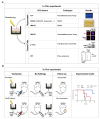Platinum Derivatives Effects on Anticancer Immune Response
- PMID: 31861811
- PMCID: PMC7022223
- DOI: 10.3390/biom10010013
Platinum Derivatives Effects on Anticancer Immune Response
Abstract
Along with surgery and radiotherapy, chemotherapeutic agents belong to the therapeutic arsenal in cancer treatment. In addition to their direct cytotoxic effects, these agents also impact the host immune system, which might enhance or counteract their antitumor activity. The platinum derivative compounds family, mainly composed of carboplatin, cisplatin and oxaliplatin, belongs to the chemotherapeutical arsenal used in numerous cancer types. Here, we will focus on the effects of these molecules on antitumor immune response. These compounds can induce or not immunogenic cell death (ICD), and some strategies have been found to induce or further enhance it. They also regulate immune cells' fate. Platinum derivatives can lead to their activation. Additionally, they can also dampen immune cells by selective killing or inhibiting their activity, particularly by modulating immune checkpoints' expression.
Keywords: carboplatin; cisplatin; immune checkpoints; immunogenic cell death; oxaliplatin.
Conflict of interest statement
The authors declare no conflict of interest.
Figures



References
-
- Galluzzi L., Vitale I., Aaronson S.A., Abrams J.M., Adam D., Agostinis P., Alnemri E.S., Altucci L., Amelio I., Andrews D.W., et al. Molecular mechanisms of cell death: Recommendations of the Nomenclature Committee on Cell Death 2018. Cell Death Differ. 2018;25:486–541. doi: 10.1038/s41418-017-0012-4. - DOI - PMC - PubMed
Publication types
MeSH terms
Substances
LinkOut - more resources
Full Text Sources

